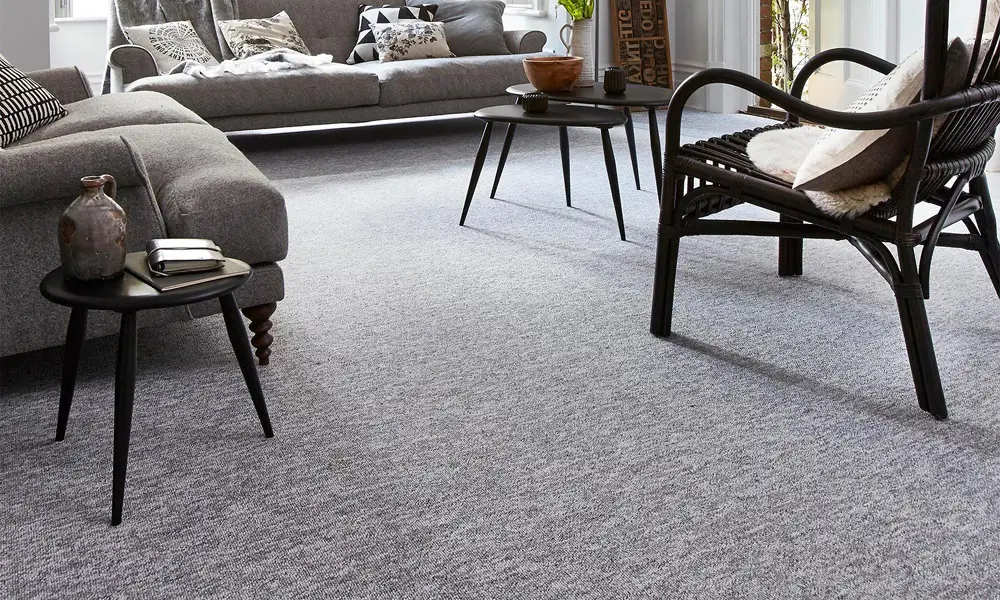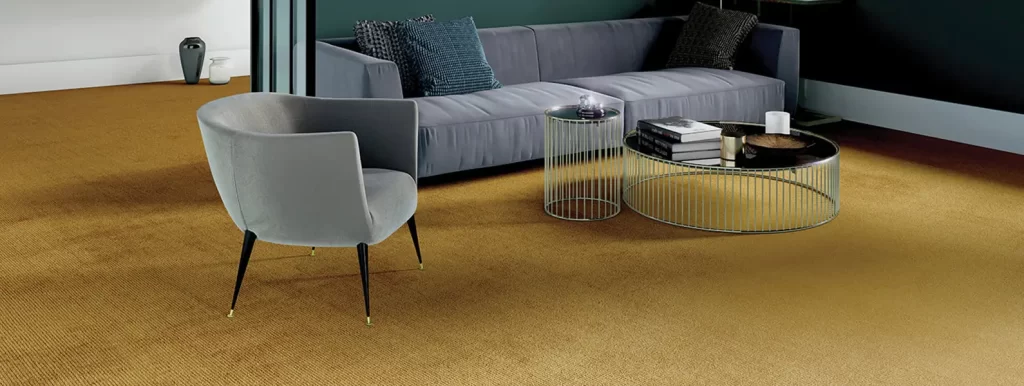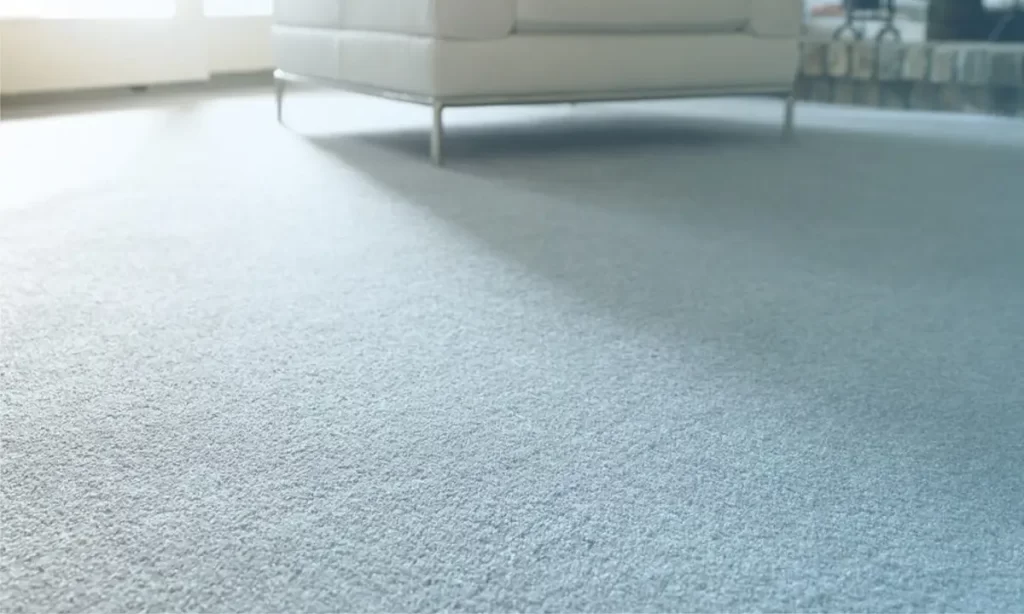Opt For Rugs To Protect Heavily Trafficked Sections Of Your Carpets

Maintaining the longevity and appearance of your carpet is essential for both practical and aesthetic reasons. Carpets are significant investments that contribute to the overall ambiance of your home, providing comfort and warmth. Regular maintenance not only extends the lifespan of your carpet but also preserves its visual appeal. Over time, foot traffic, dirt, and debris can accumulate, causing wear and tear that compromises the carpet’s fibers and color. By adopting a consistent cleaning regimen and taking preventative measures, such as using rugs in high-traffic areas, you can prevent premature aging and maintain the carpet’s plush texture and vibrant appearance. A well-maintained carpet not only enhances the beauty of your living space but also reflects your commitment to a clean and welcoming environment for you and your guests.
Concept of Using Rugs
Introducing the concept of using rugs to safeguard high-traffic zones brings forth a strategic approach to preserving your carpet’s condition. These areas, prone to rapid wear and tear, can benefit immensely from the protective barrier that rugs provide. By strategically placing rugs in entryways, hallways, and other bustling spaces, you create a shield against dirt, friction, and stains. This proactive measure not only extends the life of your carpet but also adds an element of design and warmth to your home. Discover how the simple addition of rugs can transform both the longevity and aesthetics of your living environment.
Understanding The Impact Of Foot Traffic On Carpets
Foot Traffic Frequency: The vulnerability of high-traffic areas lies in the frequency of foot traffic they endure. These zones are traversed multiple times a day, often by family members, guests, and even pets. Each step contributes to the cumulative impact on the carpet.
Impact on Carpet Lifespan: The concentrated wear, tear, and staining in high-traffic areas can significantly reduce the overall lifespan of the carpet. As these sections deteriorate faster, the entire carpet may need replacement sooner than expected, leading to additional expenses
Staining and Soiling: High-traffic areas are also more susceptible to spills, dirt, and debris from shoes. Stains from spills or tracked-in substances can become embedded in the carpet fibers, making them challenging to remove. This can result in permanent discoloration and a dingy appearance.

Common Issues Caused By Heavy Foot Traffic
- Wear and Tear: The constant friction between foot traffic and carpet fibers can lead to gradual wear and tear, causing the carpet to lose its original texture and appearance.
- Matting: Heavy foot traffic can flatten and mat down carpet fibers, creating an uneven and worn-out appearance in high-traffic areas.
- Staining: Spills and dirt brought in by shoes can lead to stubborn stains on the carpet, affecting its color and overall aesthetics.
- Fading: The repeated pressure and exposure to sunlight in high-traffic zones can cause the carpet’s colors to fade over time.
- Deterioration: In areas of heavy foot traffic, the carpet’s structure can weaken, making it more susceptible to unraveling and fraying along the edges.
- Uneven Appearance: High-traffic areas may develop an uneven surface due to differential wear, making the carpet look patchy and unattractive.
- Compromised Padding: Underlying carpet padding can degrade faster in heavily trafficked zones, leading to reduced cushioning and comfort underfoot.
- Increased Allergens: Foot traffic can kick up dust, allergens, and particles trapped in the carpet, contributing to poor indoor air quality and potential health issues.
- Odor Retention: Organic matter, spills, and moisture from foot traffic can lead to trapped odors in the carpet, creating an unpleasant environment.
- Reduced Longevity: Collectively, these issues shorten the lifespan of the carpet, necessitating more frequent replacements and increasing overall maintenance costs.
Choosing The Right Rugs For Effective Protection
While rugs offer numerous benefits, they also come with certain disadvantages that individuals should consider in their decision-making process. One notable drawback is the potential for allergens and dust mites to accumulate in the fibers of rugs, particularly in homes with individuals prone to allergies. Regular and thorough cleaning is essential to mitigate this issue, requiring additional maintenance efforts.
In high-moisture environments, rugs can become breeding grounds for mold and mildew, posing health risks and necessitating careful moisture control. This is especially relevant in humid climates or areas prone to spills. Additionally, rugs may pose a tripping hazard, especially if they are not properly secured to the floor. This is a concern, particularly for households with young children or elderly individuals.
Cleaning and maintaining rugs can also be time-consuming, requiring vacuuming, spot cleaning, and occasional professional cleaning to preserve their appearance and hygiene. Furthermore, certain types of rugs, such as those made of delicate materials like silk, may be more susceptible to damage and may require extra care.
Matching Rug Designs with Existing Décor
Achieving a seamless integration of rug designs with your existing décor is essential to enhance the overall visual appeal of your living space. When selecting rugs for high-traffic areas, consider the following strategies to ensure a harmonious blend:
- Color Coordination: Choose rug colors that complement or accentuate the existing color palette of the room. Harmonizing hues can tie the décor elements together cohesively.
- Pattern Play: Align rug patterns with the patterns and motifs present in your furniture, drapes, and accessories. A well-chosen pattern can add depth and character to the space
- Style Consistency: Match the rug’s style with the overall décor style – be it traditional, contemporary, or eclectic. This consistency creates a sense of unity and balance.
- Size Matters: Ensure the rug’s size complements the room’s dimensions and the furniture layout. A properly sized rug anchors the space and creates a sense of proportion.
- Contrast and Impact: Introduce a bold rug design as a focal point, creating contrast against neutral furniture or walls. This can infuse energy and visual interest.
- Texture and Material: Consider the texture of the rug in relation to other tactile elements in the room, like upholstery fabrics and drapery. A mix of textures can add depth and richness.

Maintaining Rugs And Carpets For Longevity
Establishing regular cleaning routines for both rugs and carpets is essential to maintain their beauty, hygiene, and longevity. Here’s a guide to help you keep these textile treasures in top-notch condition:
- Vacuuming: Aim to vacuum rugs and carpets at least once a week, or more frequently for high-traffic areas. Use a vacuum with adjustable settings to avoid damaging delicate fibers.
- Spot Cleaning: Attend to spills and stains promptly. Blot (don’t rub) the affected area with a clean cloth, and use a mild detergent mixed with water for gentle cleaning. Always test in an inconspicuous spot first.
- Deep Cleaning: Schedule deep cleaning for both rugs and carpets every 6-12 months, depending on usage. Professional cleaning services or renting a carpet cleaner can effectively remove embedded dirt and allergens.
- Rotating and Flipping: Regularly rotate rugs and furniture to distribute wear evenly. Flipping reversible rugs helps prevent one side from showing more signs of use.
- Shake Out and Beat: Take smaller rugs outdoors and shake them to dislodge dirt and debris. Larger rugs can benefit from a good beating to release trapped particles.
- Brushing: Use a soft-bristle brush to gently groom rugs and carpets, keeping fibers looking fresh and preventing matting.
- Sunlight Exposure: Avoid prolonged exposure to direct sunlight, which can cause colors to fade. Consider rotating rugs to prevent uneven fading.
- Proper Storage: When storing rugs, clean and thoroughly dry them first. Roll them up and store in a dry, well-ventilated area to prevent moisture buildup and potential mold growth.
Creative Rug Ideas For High-Traffic Areas
- Elevate your high-traffic areas with creative rug ideas that blend style and functionality seamlessly:
- Runner Rugs: Transform hallways and entryways with long, narrow runner rugs. opt for bold patterns or vibrant colors to make these often-overlooked spaces come to life.
- Layered Magic: Experiment with layering rugs to add depth and texture. Place a durable, neutral-toned rug as a base, topped with a smaller, eye-catching rug that complements your décor.
- Indoor-Outdoor Rugs: Extend your living space to the outdoors with sturdy indoor-outdoor rugs. They resist weather and foot traffic, making them perfect for patios, decks, and porches.
- Patterned Playfulness: Choose rugs with intricate patterns to disguise potential stains in busy areas like dining rooms. Geometric or floral motifs are great for camouflaging minor mishaps.
- Colorful Tiles: Mimic the charm of mosaic tiles with rugs featuring intricate tile-like patterns. These rugs inject energy into kitchens and playrooms while protecting the underlying flooring.
- Vintage Vibes: Add character to well-trodden spaces with vintage or distressed rugs. Their worn-in look naturally conceals wear and tear, making them ideal for areas with heavy foot traffic.
- Braided Beauty: Embrace the cozy charm of braided rugs. Their timeless appeal lends a touch of nostalgia to living rooms and bedrooms while standing up to frequent use.
- Textured Treasures: opt for rugs with interesting textures, like shag or jute, in high-traffic zones. The tactile experience adds an extra layer of comfort and intrigue.
Area Rugs For Living Rooms And Family Spaces
Area rugs are a transformative addition to living rooms and family spaces. They define the seating area, anchoring furniture and creating a cohesive visual focal point. Choose a rug size that accommodates your furniture layout, ensuring all key pieces are comfortably placed on the rug. opt for soft, plush textures for a cozy ambiance, while patterns and colors inject personality and style. These rugs not only enhance comfort and aesthetics but also shield the underlying flooring from foot traffic, making them a practical and stylish choice for your gathering and relaxation spaces.
Conclusion
Rugs play a pivotal role in cultivating a clean, stylish, and well-preserved living environment. As guardians of high-traffic areas, they intercept dirt, dust, and debris, preventing these particles from infiltrating your floors and air. This proactive defense not only upholds cleanliness but also extends the lifespan of your carpets and flooring.
In terms of style, rugs are design chameleons. They introduce color, pattern, and texture, instantly elevating the aesthetics of a room. By complementing existing décor and furniture, rugs unify the visual elements, forging a harmonious ambiance.



